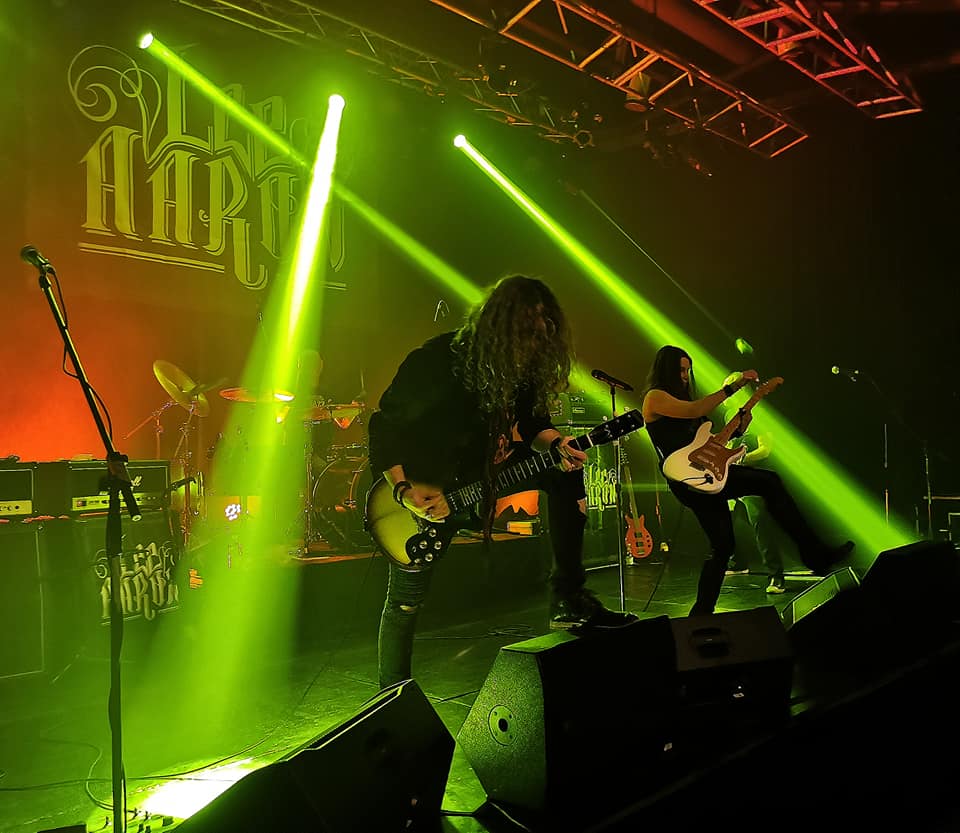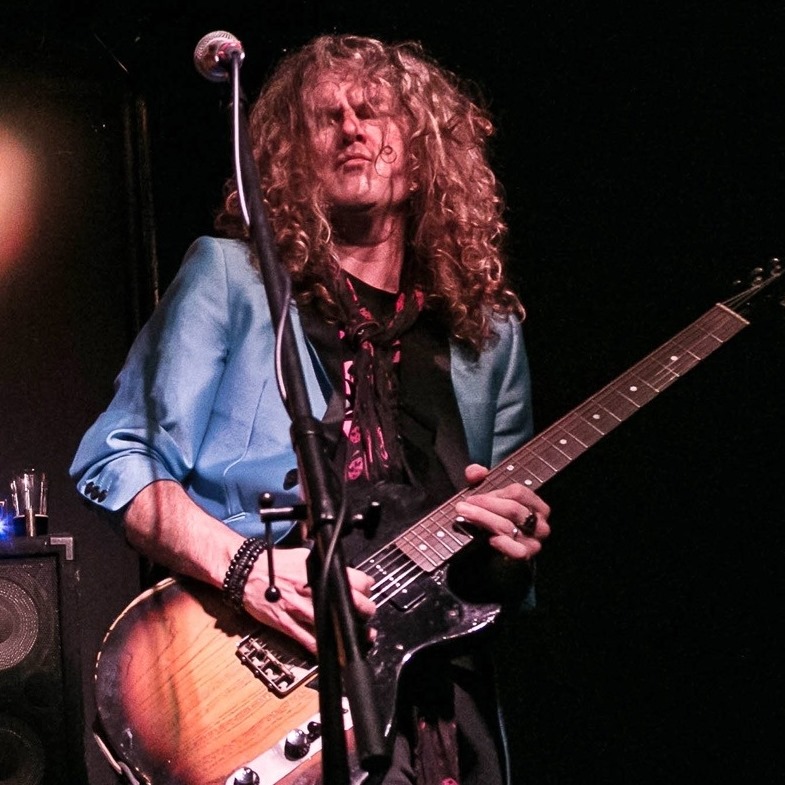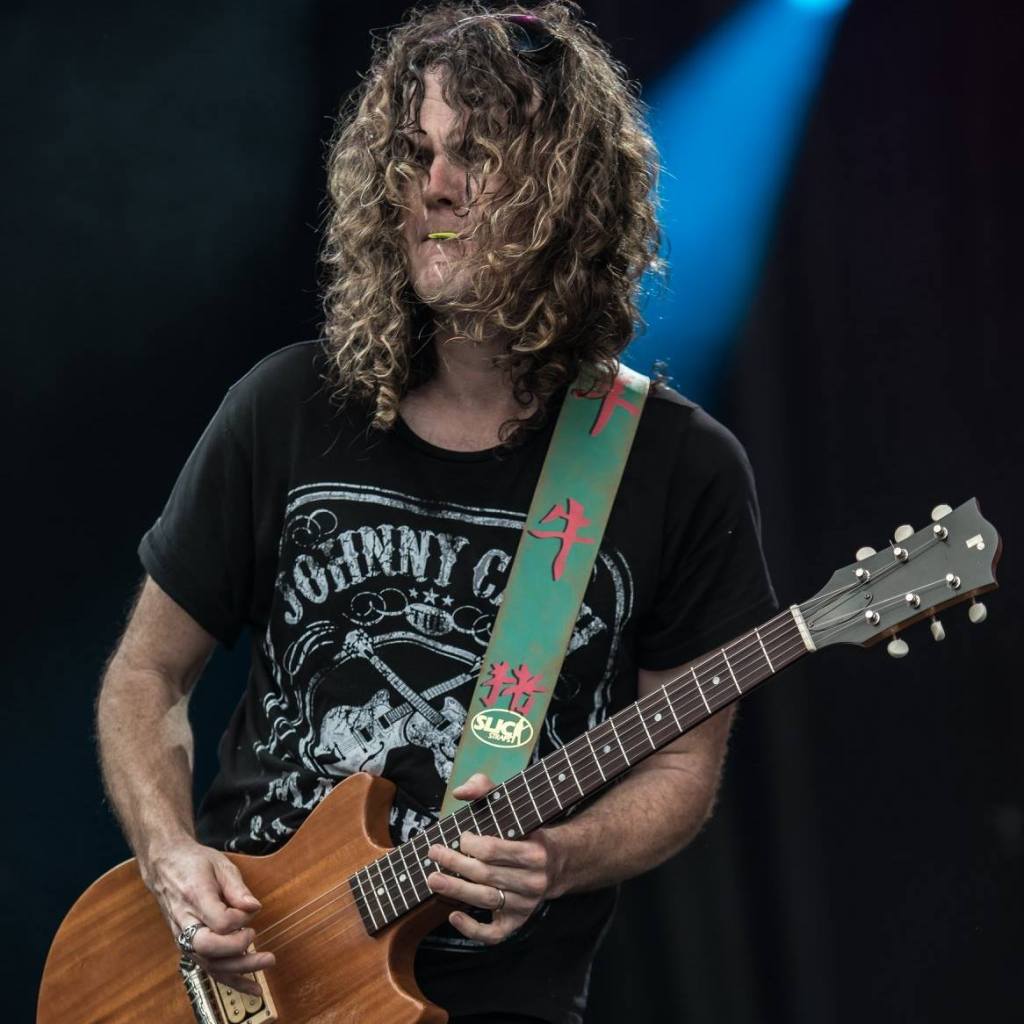
All images courtesy of Sean Kelly/Image credit: Rik Roe

By Andrew Daly
[email protected]
A lifetime of devouring ’80s hard rock and heavy metal has defined guitarist Sean Kelly’s swing, style, and swagger from day one.
It would be easy to boil down Sean Kelly’s style to the axe-slingers that came before him during the infamous shred era. And while he certainly pays homage to his influences, through his persistent harkening back to the music he loves, he’s aiding in keeping the good work of rock alive and well.
Through his exploits with Helix, Crash Kelly, Coney Hatch, and Nelly Furtado, Kelly has established himself as a flashy performer, fluid soloist, and inventive writer. And if his music were all he had to offer, that would be impressive enough, but additionally, Kelly has penned several books on the ’80s rock era, too, further establishing himself as a champion of the genre through his writing as well as his axe-slinging.
During a break in the action, Sean Kelly recently caught up with VWMusic to recount his love for ’80s rock, time with Helix, Coney Hatch, and Nelly Furtado, as well as what’s next as he moves forward in 2023.
First and foremost, what can you tell me about your book?
Don’t Call It Hair Metal: Art In The Excess of ’80s Rock is essentially a love letter to the era of rock ‘n’ roll that I feel has been, at times, critically maligned. It’s a look at the artistic intention and sonic development of the music that inspired me to become a musician and has remained important and relevant to me to this day. I speak with a number of artists, musicians, producers, and music industry professionals in the book, and their insights both strengthened opinions I already held while also challenging some of my preconceptions. At the end of the day, the book ultimately looks at commercial hard rock in the ’80s through the prism of my own development as a listener and an aspiring artist.
What inspired you to write the book, and what was your approach?
I have found that when I’m called upon to write or record with other musicians, there can be an air of dismissiveness when I cite an ’80s band as a reference for inspiration. I may have been inspired to play a riff because I heard something similar on a Cinderella or Whitesnake album, but for some reason, it isn’t met with the same enthusiasm that it may have if I had played the same riff and referenced Aerosmith or Led Zeppelin. Because of the often over-the-top visual aspect that accompanied the promotion of these records, and ultimately the formulaic commercialism that corrupted the industry during the end of the era, I feel that a lot of the best music of the era doesn’t get a fair critical shake.
What about the hair metal era sticks out to you most?
As a guitar player, I loved the weight given to the guitar solo role; it was an era of over-the-top technical aspiration and sonic development. The ’80s provided us with some of the electric guitars’ most thrilling moments. It was great fun to witness how players like Edward Van Halen, Randy Rhoads, and later George Lynch, Warren DeMartini, Jake E. Lee, Yngwie Malmsteen, Vito Bratta, and so many more took inspiration from their hard-rocking forefathers and created a whole new vocabulary of guitar playing, nestled in a treasure trove of tunes that were essentially pop music in hard rock clothing.

All images courtesy of Sean Kelly/Image credit: Chris Preston
Going back, what first inspired you to pick up the guitar?
Hearing Twisted Sister’s “We’re Not Gonna Take It” changed everything for me, as did the music of Def Leppard, Quiet Riot, and Mötley Crüe. My early obsessions with comic books, Star Wars, and hockey immediately took a back seat to learn how to make the sounds I was hearing on records like Stay Hungry, Shout at the Devil, Pyromania, and Metal Health. I wanted to be a part of the look, the sound, and the feeling of what I was listening to on cassette and reading about in magazines like Guitar World, Hit Parader, and Circus. The electric guitar was like a divining rod that led me to the rock n roll well, and I was thirsty!
How has your style progressed?
I grew up deeply inspired and influenced by the great rock guitarists of the ’80s, but I think I’m essentially a ’70s hard rock guitarist at heart. I tend to play with a bit of a Joe Perry, Ritchie Blackmore, Ace Frehley, and Gorham/Roberston-era Thin Lizzy. However, Edward Van Halen and Randy Rhoads are my two all-time favorite guitarists. I love players like Warren DeMartini, Tracii Guns, Paul Gilbert, Yngwie Malmsteen, John Sykes, and all the great ’80 players. I think I ultimately land somewhere in the space occupied by players like Richie Sambora, Bruce Kulick, and Keith Scott, although I would never deign to think I’m anywhere near their level. I love melodic hard rock guitar playing that has a bit of technical razzle-dazzle but still feels like it could fall apart at any minute.
How did you end up in Helix playing bass?
I had been bugging Brian Vollmer to join Helix as a guitarist for years, but the chair was never available. My pal Mitch Lafon recommended me to Brian when he was looking for a bassist, and I jumped at the chance to audition. Helix with Honeymoon Suite was the first rock concert I ever attended, and both bands hold a special place in my heart. Fortunately, I have the opportunity to write songs and perform with both bands. I’ve played bass with a number of artists throughout my career, including Gilby Clarke and Rough Trade, and I’ve always loved it. Playing with Helix on stage and in the studio always feels natural, as they were such a big part of my early musical development.
What led you to move on from Helix for Nelly Furtado? Being that Nelly is pop-oriented, did you feel you had room to breathe guitar-wise?
The opportunity to audition for Nelly came just as I had begun performing with Helix. My good friend and former guitar tech in Crash Kelly, Damon Enright, was Nelly’s tech, and he let me know that she was looking for a guitarist with some Spanish guitar chops for an upcoming tour. The audition went well and turned into a wonderful 10-year journey touring and recording with her.
I consider the experience one of the greatest periods of musical growth in my life, as I was challenged to play in several different styles while still being encouraged to bring my personality to the table. I was given numerous opportunities to stretch out, allowing me to see the world while playing to massive audiences. Still, it was tough to leave Helix. Fortunately, I have continued my writing and recording relationship with Brian Vollmer and the band. We are actually working on two new songs, which I’m really excited about.
Walk me through joining Coney Hatch. What territory are you exploring, and what do you love most about being in the band?
I met one of Coney Hatch’s two frontmen, Carl Dixon, back in my Crash Kelly days. He was always very supportive and willing to offer advice. I was a fan of the band growing up, and years later, Carl offered me a gig playing in his solo band. When Steve Shelski left the band, I filled in for a few dates and joined the band in 2018. Playing in Coney Hatch is a total thrill, as they embrace so much of what I love about hard rock. In Carl and Andy Curran, Coney has two incredibly diverse writers and vocalists, and the contrast between the two makes for a really exciting energy.
Dave Ketchum is a powerhouse behind the kit, and it’s an honor to play Steve Shelski’s iconic riffs and lead parts. During the pandemic, we recorded the Live at the El Mocambo double vinyl set, and we recently signed with Explorer 1 Music for another live album, Postcard From Germany. This new live album was recorded at the famous Rock Fabrik club in Ludwigsburg and featured two new studio tracks. We will be touring with British Lion – featuring Iron Maiden’s Steve Harris – in the U.K. in January 2023.
What can you tell me about your contributions to Lee Aaron’s new music?
I met Lee when I interviewed her for my first book, Metal On Ice, back in 2013. When I went to Vancouver to record her vocals for the album that accompanied the book, we hit it off on a musical and personal level. An offer to sub in on a few dates in Ontario in 2014 led to an offer to join her band alongside bassist Dave Reimer and drummer John Cody. This collective has recorded and released five studio albums as well as a live album. The latest album is called Elevate and was recorded and engineered by Mike Fraser at the Armoury Studios in Vancouver. I feel so honored to write songs, record, and tour with these amazing musicians; it truly is a rock ‘n’ roll family.

All images courtesy of Sean Kelly/Image credit: Andrew Clowater
Considering you’re something of a historian when it comes to ’80s rock, let’s talk origins. Describe the importance of bands like KISS, Starz, and Angel on the ’80s rock scene.
In the case of KISS, and to a lesser extent, Angel, their elaborate visuals obviously influenced the look and feel of concert productions and music videos in the ’80s. I think that KISS’s Alive! was a big influence on the arena rock production elements of ’80s rock. The idea of capturing the bombast of the concert experience on a studio recording and allowing fans in remote reaches an opportunity to feel the power of the big concert experience.
In the case of KISS and Starz, both bands also provided the template for concise, power-pop-oriented songwriting, toughened up with Zeppelin-esque guitar riffs and acrobatic vocals. Angel was a bit more progressive sounding, but they later followed suit with a more streamlined approach on White Hot, shortening the songs and tightening the arrangements.
What hair metal records are your favorite, and why?
I tend to favor the early to mid-80s classics; albums like the debut album by W.A.S.P, Too Fast For Love and Shout At The Devil by Mötley Crüe, Out of the Cellar by Ratt, Pyromania by Def Leppard, Quiet Riot’s Metal Health, Stay Hungry by Twisted Sister, and Midnite Dynamite by KIX. While the production elements were definitely starting to change from the ’70s, there is still a sense of rawness and urgency, something more connected to the early spirit of rock ‘n’ roll.
Even Pyromania, with its massive production and use of the Fairlight instrument sampler, still had rough and ready elements of UFO and ACϟDC. Of course, I still love the dawn of pop-metal from ’86 onwards, with albums like Slippery When Wet, Night Songs, Look What The Cat Dragged In, Hysteria, and the efforts from all of the W bands: Whitesnake, Winger, Warrant, White Lion, etc. Not to mention all the streetwise bands like Skid Row, Faster Pussycat, Vain, Jetboy, and L.A. Guns who found success in the wake of Appetite For Destruction’s massive success.
Honestly, I loved it all and was very excited about the albums that came out in the early ’90s as well, like Slave To The Grind, A Bit of What You Fancy by the London Quireboys, Slik Toxik’s Doin’ The Nasty, even the self-titled Mötley Crüe album with John Corabi on vocals. They all creep up in my playing because they were the soundtrack to my formative years.
What is one hair metal era band that should have been huge but wasn’t?
TNT. Exceptional songs, an incredible vocalist in Tony Harnell, and one of the most underrated guitarists ever in Ronnie Le Tekro. Ronnie was the perfect combination of aggressive pick attack and adventurously melodic playing and note choice.
What lessons did you take away from working with Rudy Sarzo and Gilby Clarke?
That it is entirely possible to be incredibly talented and effortlessly cool while also being friendly, kind, and down to earth—two of the nicest gentlemen that you’d ever want to meet. Gilby, in particular, has been like a big brother and mentor to me, producing two Crash Kelly albums and welcoming me into his band. A career highlight is playing on his most recent album, The Gospel Truth.
What’s next for you in all lanes?
I want to dive even deeper into my passion for ’70s and ’80s hard rock. There will be more recording projects, more songwriting, writing more books, and playing more guitar. I am planning to start work on a new Crash Kelly album, continue my work with Lee Aaron and Coney Hatch, and seek out as many opportunities as I can to celebrate the music that lights me up inside.

All images courtesy of Sean Kelly/Image credit: Kris Gelder
– Andrew Daly (@ajdwriter88) is the Editor-in-Chief of www.vwmusicrocks.com and may be reached at [email protected]

Fantastic interview Andy. Will be seeing Sean w/Coney Hatch in a few weeks!
Fantastic interview Andrew. Will be seeing Sean w/Coney Hatch in a few weeks!